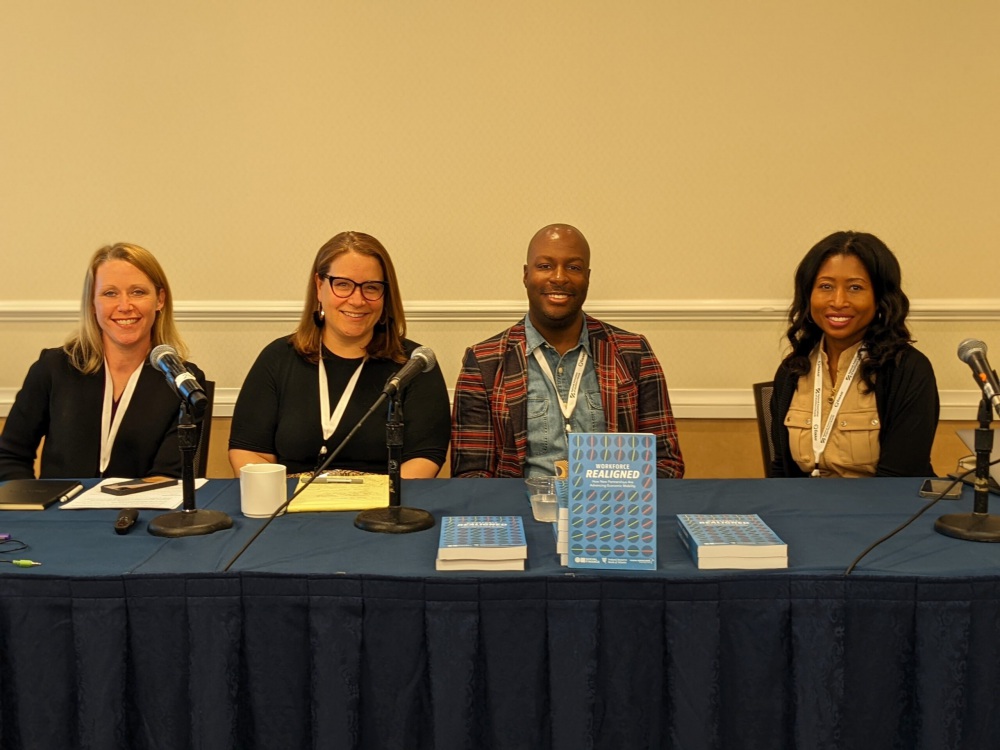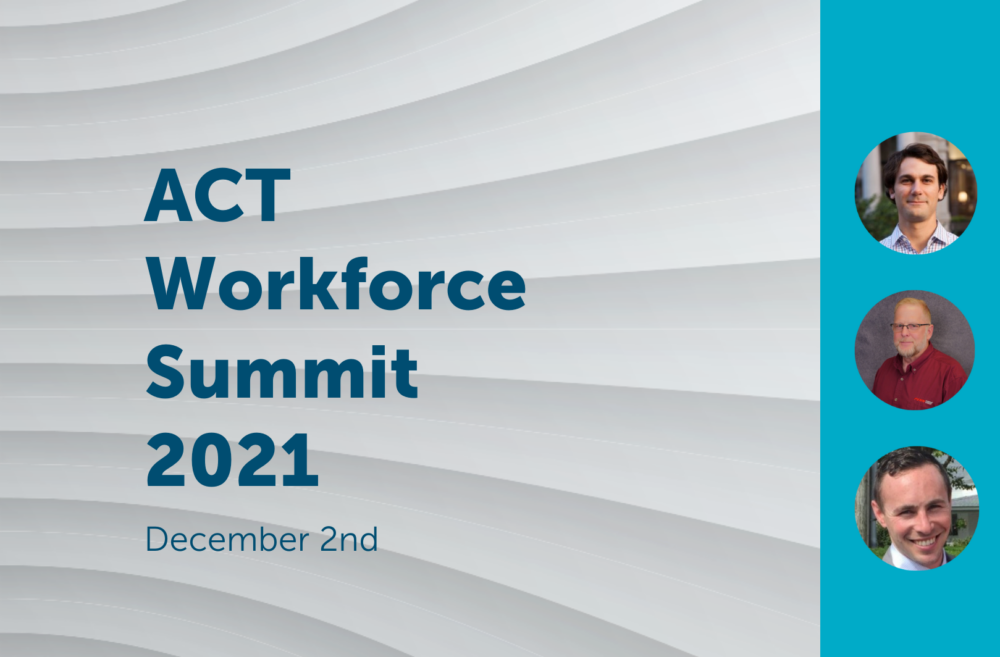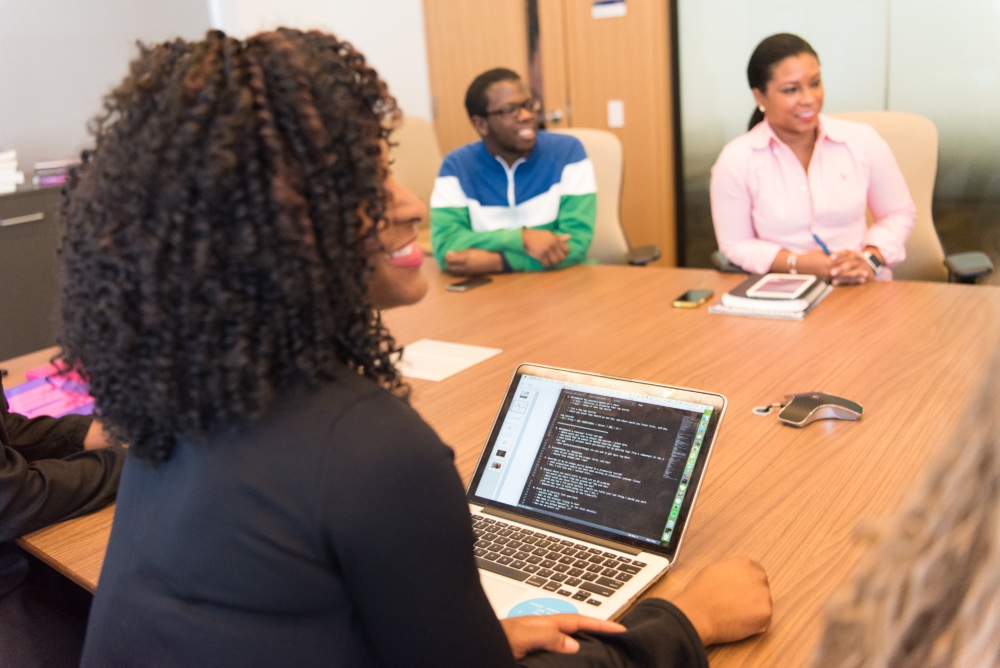

Public Sector Solutions, Workforce & Economic Mobility, , Results-Based Funding
Key Takeaway
Innovative workforce development partnerships that align incentives, link funding to results, and drive true impact for American workers will help address declining economic mobility and deliver results for U.S. workers and businesses.
Declining economic mobility is one of the defining challenges of our time. Thankfully, we’re seeing a promising response across the country: innovative, accountable workforce partnerships that are delivering results for U.S. workers and businesses. In our recent workshop at the 2022 National Association Workforce Boards Forum, we teamed up with Sarah Miller of the Federal Reserve Bank of Atlanta, Tyrone Hampton Jr. of Philadelphia Works, and Angela Jackson of the Kapor Center, to discuss Workforce Realigned: How New Partnerships Are Advancing Economic Mobility—a book by Social Finance and the Federal Reserve Banks of Atlanta and Philadelphia that rethinks the way we finance worker upskilling. Explore four key takeaways from the workshop below.
1. Many workforce boards are not using Pay for Success models—but they should be.
Workforce boards across the country, eager to track outcomes and serve more learners, are often hampered by limited resources. Pay for Success can help them navigate this challenge. From the Outcomes Rate Card to the Career Impact Bond, Pay for Success models can help workforce boards link funding to outcomes for learners and, in doing so, stretch the impact of each dollar spent to serve more people and drive better results.
Related: What is Pay for Success?
2. Workforce development professionals are extremely interested in public-private partnerships with employer payors.
Workforce boards and development organizations have plenty of workers to train, but they often struggle to secure quality employment for these workers.
Philadelphia Works, a nonprofit organization that connects youth and adult career seekers to employment and training opportunities, turned to Comcast, a major local employer, to solve this problem. With help from Social Finance, Sorenson Impact Center, and the Federal Reserve Bank of Philadelphia, Philadelphia Works developed a performance-based contract with Comcast.
For workforce boards, many of which are perpetually resource-constrained, employer commitments like these have the potential to be transformative.
This pilot program, which is ongoing, enables people without college degrees to receive training for in-demand sales roles at Comcast (roles that pay above the local median wage). Under the partnership, Philadelphia Works used federal WIOA funding to provide for the upfront cost of training and Comcast serves as the payor, reimbursing the nonprofit for workers hired and workers retained.
For workforce boards, many of which are perpetually resource-constrained, employer commitments like this have the potential to be transformative. Through employer payors, workforce boards can fill their mandates of upskilling workers in their community, meet the needs of local employers (who, in the midst of the Great Reshuffle, are desperate for talent), and access funding beyond the sparse dollars available from the state and federal governments to upskill even more workers. For these reasons and more, workforce boards and development professionals are hungry for such opportunities.
3. Workforce boards are eager to embrace innovations.
In 2020, New Profit launched the Future of Work Grand Challenge to generate and identify innovative solutions for workforce development.
The Grand Challenge ultimately selected six workforce boards to test the most promising solutions generated by applicants. These geographically diverse boards, which collectively serve more than 200,000 workers, will produce data, research, and outcomes on training completion, job placement, employee retention, and wage increases, with the goal of adapting what works for workforce boards across the country.
Workforce development boards interact with millions of displaced workers each year. By experimenting with and sharing the results from innovative models for workforce training, they can better serve more workers and help similar organizations do the same.
4. By putting “skin in the game” for training providers, Pay It Forward Funds and Career Impact Bonds offer new ways to stretch each workforce dollar.
Traditionally, students bear all the risk that comes with pursuing career education. But in Career Impact Bonds and Pay It Forward Funds, two financing models pioneered by Social Finance, risk is redistributed among stakeholders. Students only pay when they see outcomes, measured by sustained wage gains post-training. Training providers only get paid, and workforce boards only pay them, once those outcomes are achieved.
By realigning incentives around student success, these financing models hold training providers accountable and help workforce boards achieve their goals of preparing their constituents for careers in high-demand fields.
Are you interested in learning more about innovative workforce development partnerships that align incentives, link funding to results, and drive true impact for American workers? Explore 19 case studies and nascent ideas on how to reboot economic mobility in America—from leaders including U.S. Secretary of Commerce Gina Raimondo, former Speaker of the House Paul Ryan, Governor Charlie Baker, and former FDIC Chair Sheila Bair—in Workforce Realigned: How New Partnerships Are Advancing Economic Mobility.
Learn more about Workforce Realigned →
Related Insight

2021 ACT Workforce Summit: Cross-Sector Partners and Innovative Solutions
Workforce development, education, and government leaders gathered virtually to discuss workforce challenges and solutions at the 2021 ACT Workforce Virtual Summit.

Aspen Ideas Festival 2022: Innovations in Workforce Development: New Models to Finance the Future of Work

Building a Better Workforce
This paper presents recommendations to help state governments utilize the funding from this legislation to support citizens in finding and keeping high-quality jobs. In addition, there is advice on how to design a framework to…